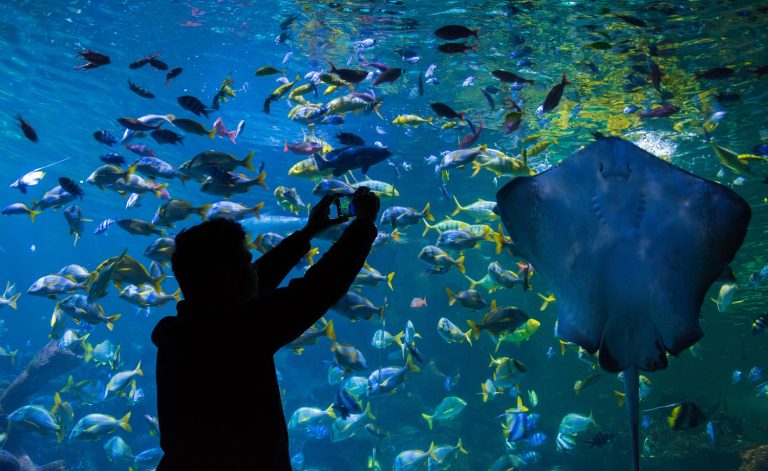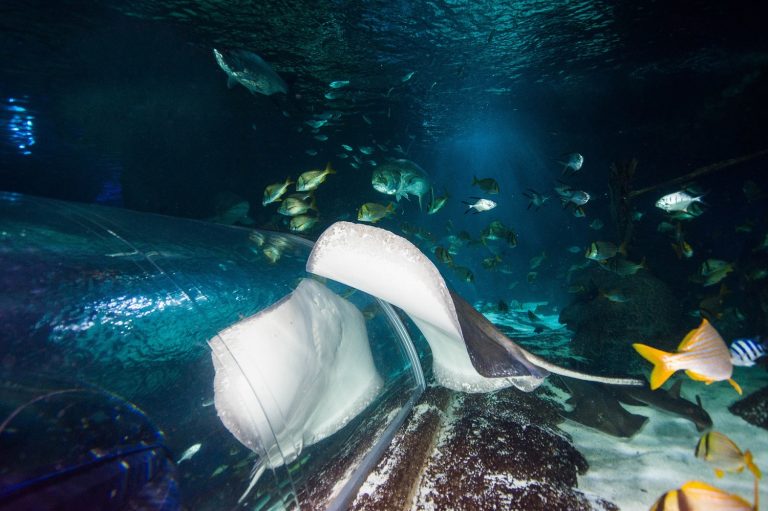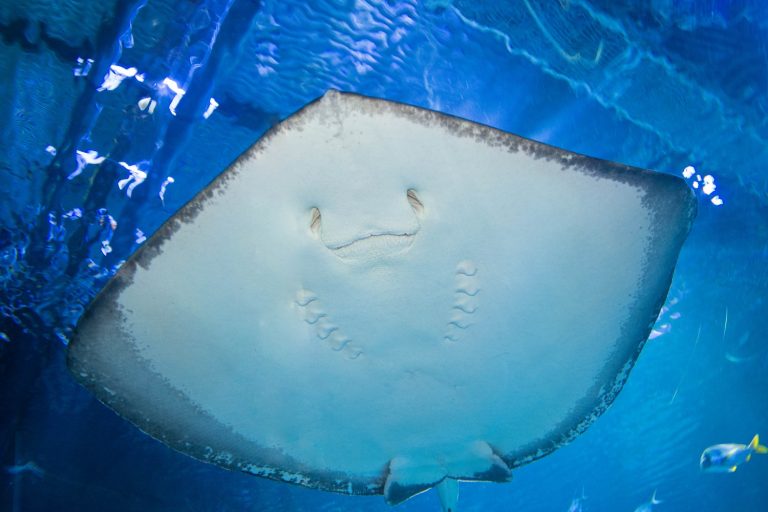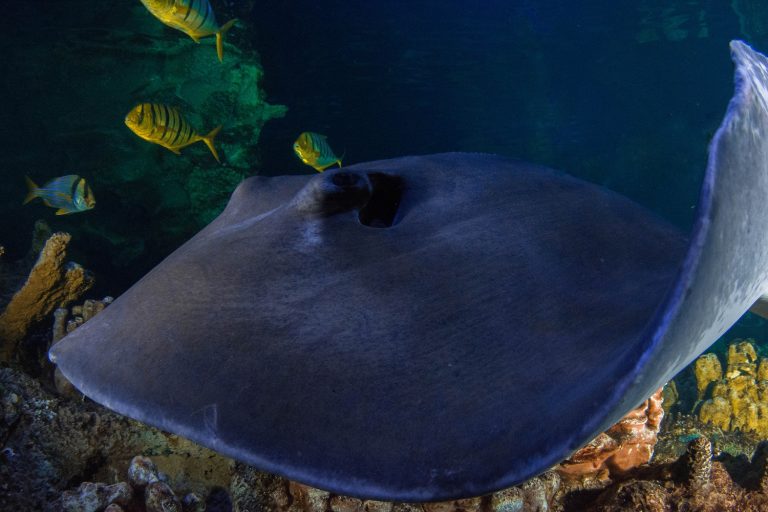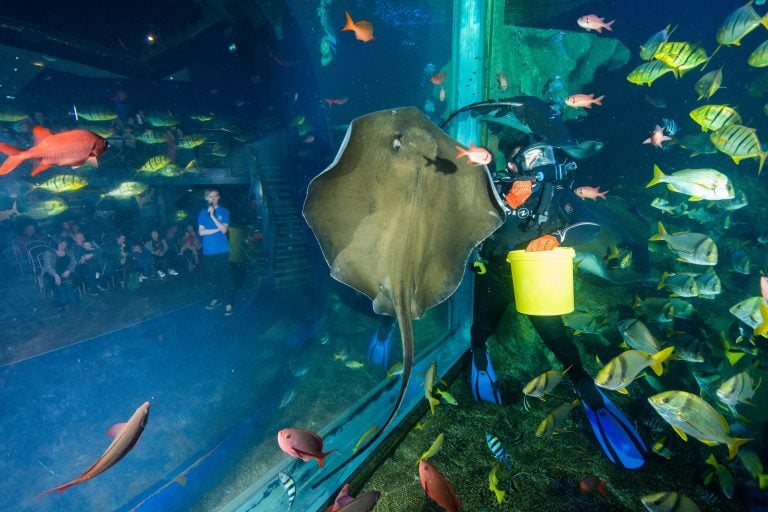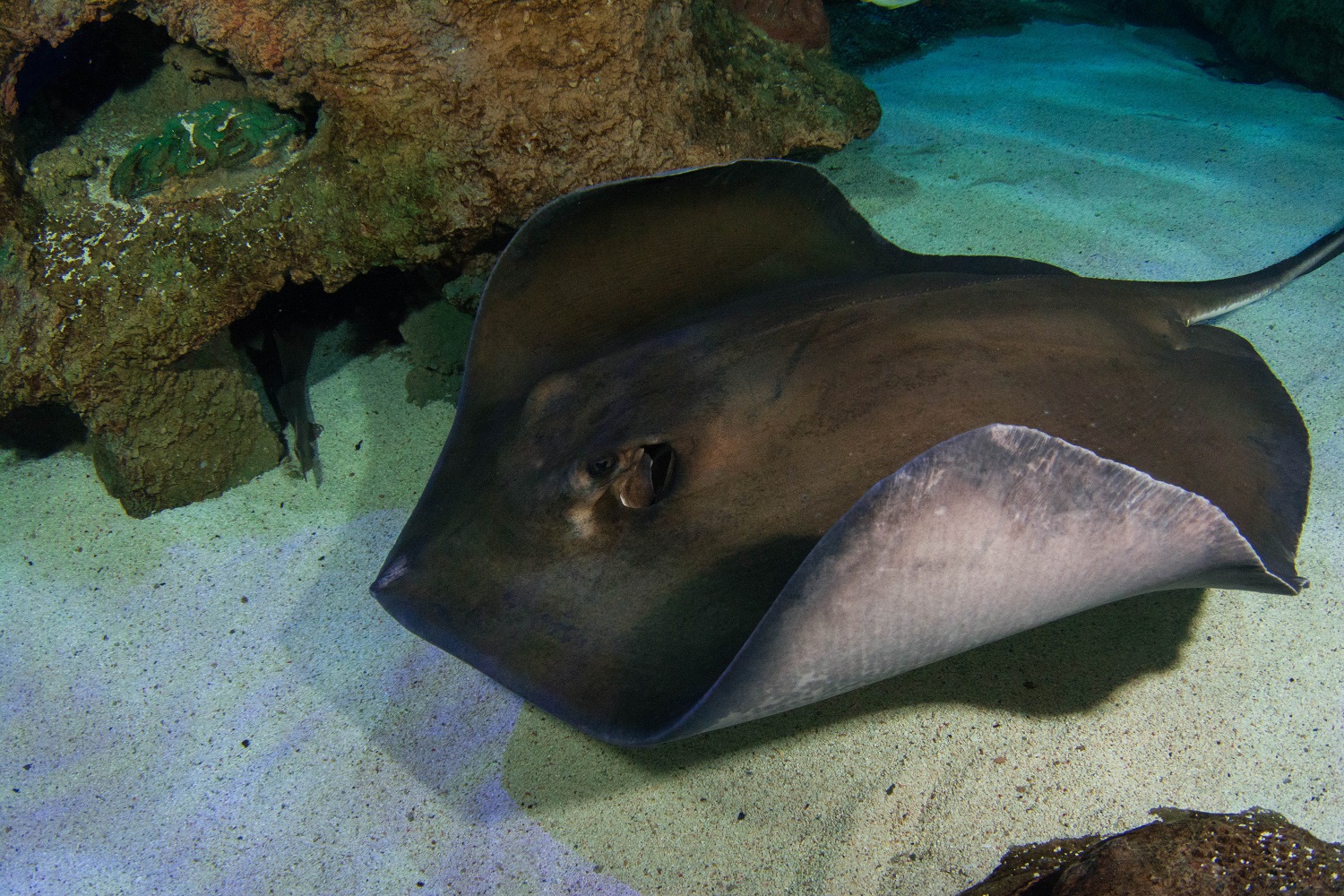
Typically residing in tropical and sub-tropical marine waters, Stingrays (Myliobatoidei) can be found throughout the world, although most prefer coastal areas.
So, what interesting facts can you learn about these creatures? You might not know that stingrays are actually closely related to sharks. This is because they’re made up of cartilage instead of bone, in addition to having electroreceptors helping them find and capture prey. Interestingly, they also have spiracles which the animal uses to breathe. These openings are cleverly positioned behind the eyes on the top of their body, allowing them to breathe whilst lying flat on the bottom of the water, camouflaged to either hide from predators or to surprise their prey! Speaking of prey, with their strong, crushing jaws, stingrays have no difficulty feeding on tougher prey such as molluscs and crustaceans. Stingrays also move very differently from most other animals – southern stingrays move by undulation, while eagle rays move using a process called oscillation.
Types of stingray at Blue Planet Aquarium
There are a total of 220 different species of stingrays, with some living in rivers and others prefer coastal areas. The different types of rays can be found all across the globe, which means that many have developed unique characteristics, diets and appearances to adapt to their habitats. Here, we’ll give you the low-down on the types of stingray you can find here at Blue Planet Aquarium.
Southern stingray (Hypanus americanus)
Part of the whiptail stingray family (Dasyatidae), the southern stingray is native to the Western Atlantic Ocean and can normally be seen laying on sandy bottoms on the coastlines. Thanks to its flat, diamond-shaped body, it can easily burrow into the soft sediment leaving only its eyes poking out allowing it to hide from predators and potential prey. It uses an electric sense to seek out its prey which mostly consists of shrimps, crabs and other crustaceans, and the southern stingray can give a nasty venomous sting from near the base of its tail!
Ocellate eagle ray (Aetobatus ocellatus)
The ocellate eagle ray slots nicely into the Myliobatidae family and is mostly found enjoying the reefs and shallow waters in the tropical Indo-West Pacific Ocean. However, these creatures are strong swimmers, and you might still find a few out in deeper open waters around this region. With white mottled markings and dark greenish, grey colourings, this species is nicely distinguished from other types of rays.
Xingu River stingray (Potamotrygon leopoldi)
Often called the polka-dot stingray thanks to its spotted appearance, the Xingu River stingray is a master of camouflage and can expertly hide against the rocky ocean floor. As you might guess from its name, this type of ray is endemic to the Xingu River in Brazil, which means this is the only place you’ll find these creatures out in the wild.
Freshwater river stingray (Potamotrygon motoro)
The freshwater river stingray, sometimes also called ocellate or black river stingray, can only be found across South American river systems where they can survive in their preferred tropical freshwater habitat. To go with their unique habitat, they also have a different appearance featuring orange and yellow dorsal eyespots surrounded by a black ring on their otherwise typical greyish-brown bodies.
Other rays at Blue Planet Aquarium
These two species don’t have barbed tails and belong to different families, but since they’re still classified as species of ray, we thought we’d still introduce you to them.
Thornback ray (Raja clavata)
Belonging to the skate family and being the only one in its genus (Raja), the thornback ray is unique in many ways. Firstly, it’s probably the only ray you’ll find on the British coast, although you’re less likely to spot it off Scotland and England’s east coast. It also has a uniquely distinctive kite-shaped body with a thorny brown and black appearance. Although other ray species have thorns, the thornback ray has the biggest.
Blackchin guitarfish (Glaucostegus cemiculus)
Native to the Eastern Atlantic Ocean from northern Portugal to Angola, including the Mediterranean Sea, the blackchin guitarfish is another of the larger ray species in the world typically reaching 150cm in length. As with most other rays, this species mostly feeds on a combination of crustaceans and small fish. They’re part of the Rhinopristiforme family, and as with the above ray, they don’t have a barb on their tail which is characteristic of stingrays.
Come and see for yourself
At Blue Reef Aquarium, we couldn’t be more excited to show off our stingray species across our exhibits. Our blackchin guitarfish and southern stingray can be found floating around in our exciting Ocean exhibit. You can then stroll over to our Flooded Forest exhibit where you can get a closer look at our ocellate river stingray and Xingu river stingray. Thornback ray in Rock Pools exhibit.
At each of these exhibits, we encourage visitors to learn all about the fascinating species inhabiting the different environments we’ve created. People of all ages are welcome to come along and discover our diverse range of creatures all calling the aquarium home.
Eager to start planning your next family visit? Book your tickets to Blue Planet Aquarium right here.
Type
Rays
What do they eat?
Molluscs, Muscles and Crustaceans
Size
Up to 1.9metres
Water Type
Tropical and Sub tropical
Where are we?
All over the World

